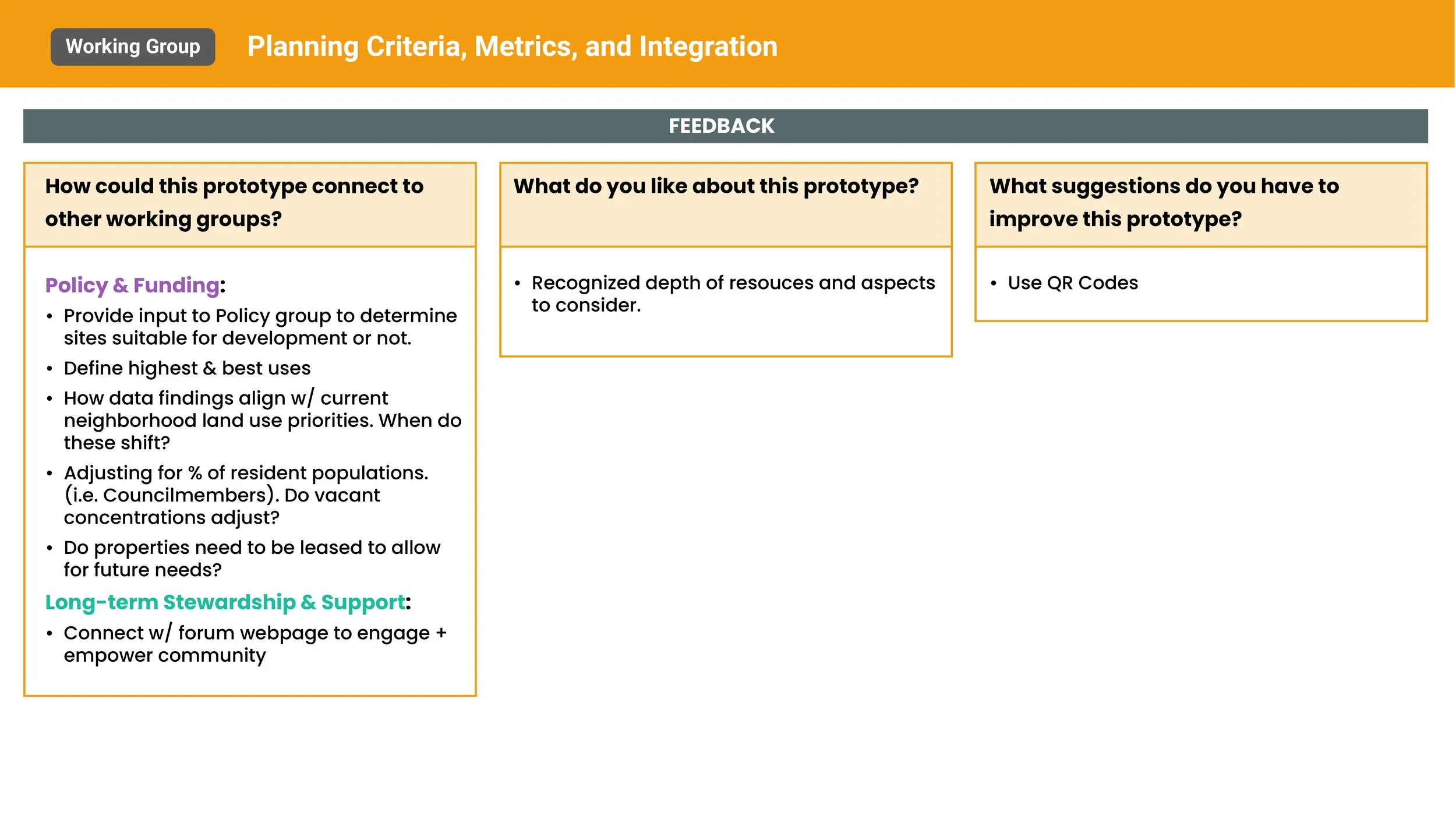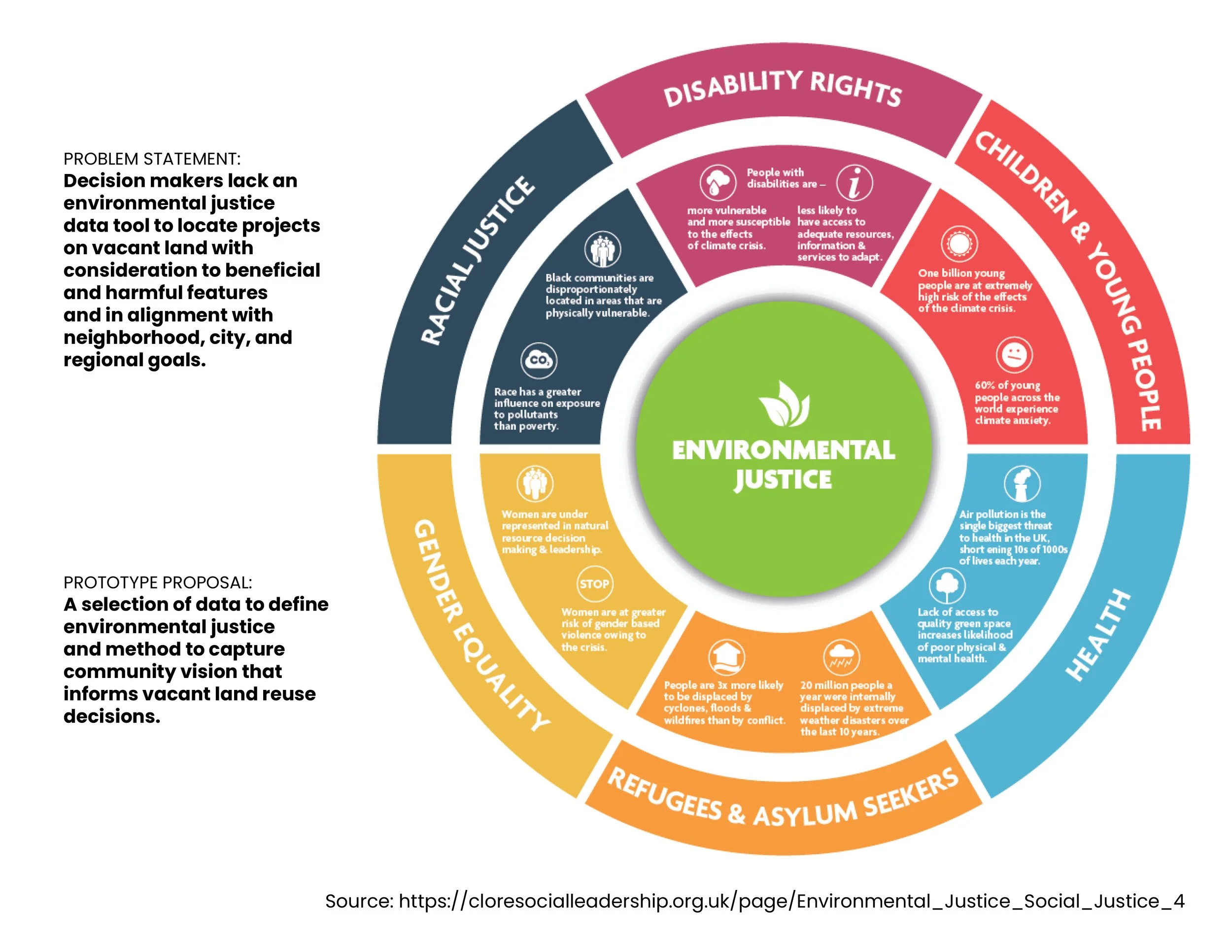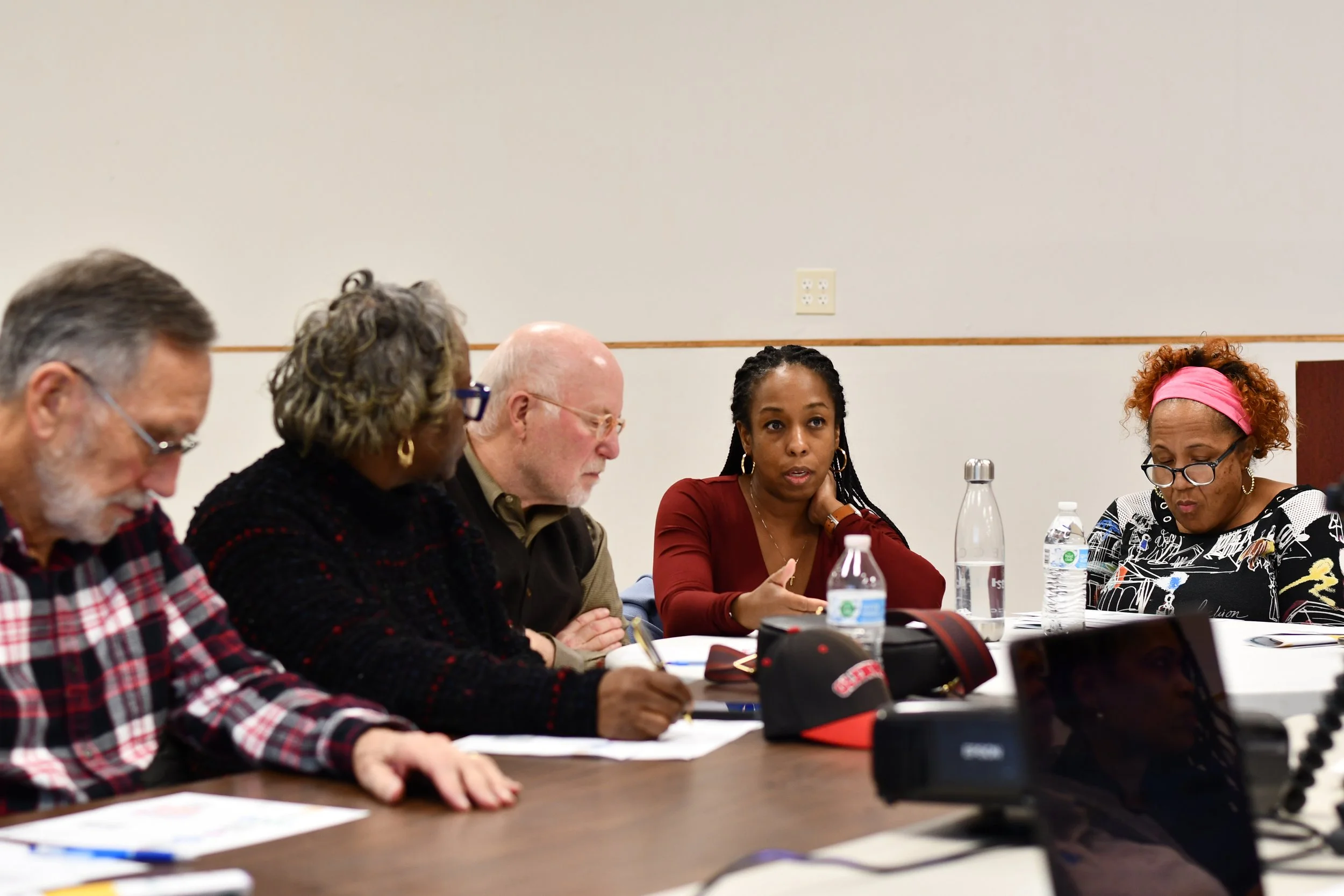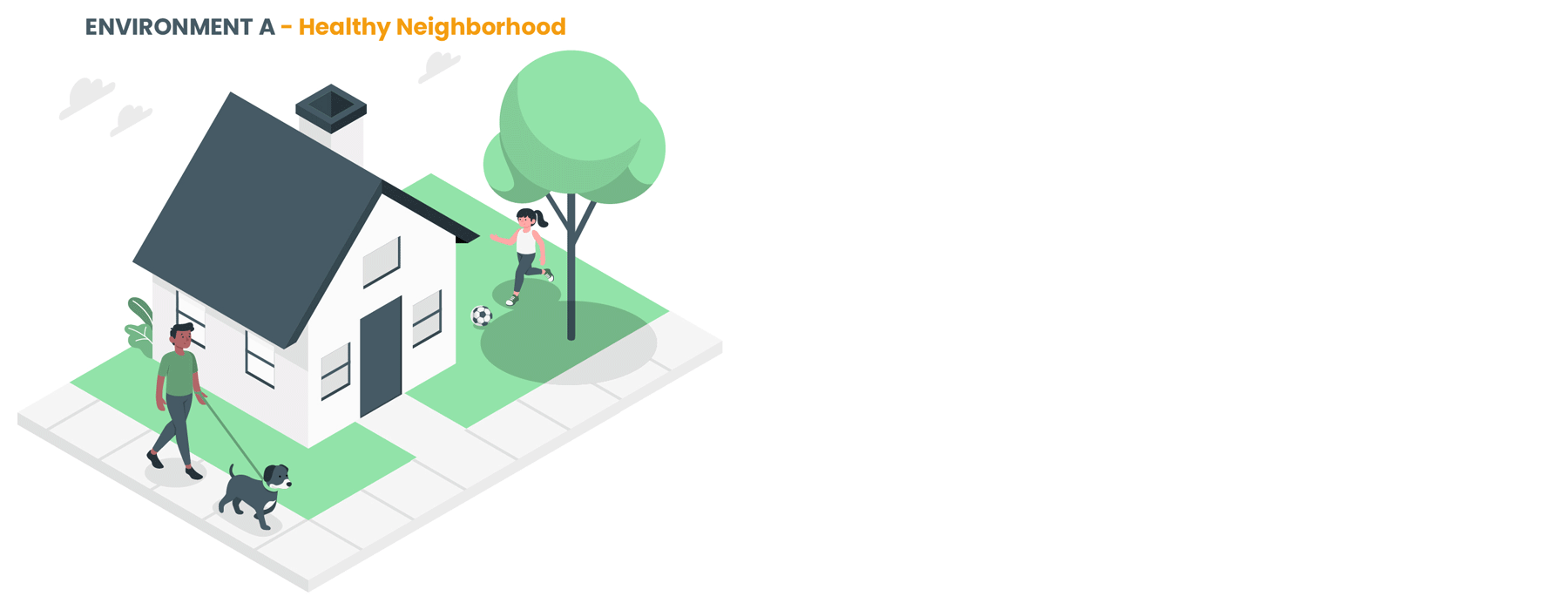
Planning Criteria, Metrics & Integration
Planning Criteria, Metrics & Integration
Focus Area:
Integrate existing plans with new metrics to address environmental justice, public health, and quality of life inequities through vacant land.
Working Group Process

01
Problem Statement:
Decision makers lack an environmental justice data tool to locate projects on vacant land with consideration to beneficial and harmful features and in alignment with neighborhood, city, and regional goals.
Goals:
Achieve a macro-level understanding and micro-level (block by block) understanding of Environmental Justice.
Keep everybody engaged and involved in the process of developing and tracking progress towards our metrics/framework.
Create a decision-making tool that is testable. Validated by different users.
Integrate the vacant land work with the other plans and programs. Not just city-scale, but regional. (Ex. connect to Climate Action Plan and across silos.)

02
Prototype Proposal:
A selection of data to define environmental justice and method to capture community vision that informs vacant land reuse decisions.
03
Present Prototype to Other Working Groups:
See slides below for a summary of the prototype development process at Stakeholder Summit 3.0 held at Cleveland City Hall.

04
Prototype Development:
Updated visualizations of Environmental Justice criteria for use during community engagement activities.

04.5
Results from Focus Group:
How does vacant land nearby your home impact your quality of life?
Issues listed were: reduces property value, debris / illegal dumping, rodents, violence and safety (participants noted a difference between violence and safety). The focus of the conversation revolved around maintenance of vacant lots and the capacity of the City to mow (not "landscape") the lots. Participants were split about whether they thought the City did a poor job or the City was doing the best they could with the available resources.
How would you prioritize reuse proposals?
There was broad agreement that people who demonstrated a capacity to maintain a space with their community members should have high priority to access vacant land. Groups that seek to address city-wide or local issues should also have priority access. The use of the land seemed secondary to the organizational capacity of the group or individual.
What opportunities do vacant lots provide?
Vacant lots can be demonstrations of community organization, a place to hang out, like a coffee shop, or a place to play games or sports on, or grow food. A common thread throughout the focus group was the sense that a maintained vacant lot reflected the organizing capacity of the block or neighborhood. Where a strong block club or group of neighbors exists, a vacant lot can be maintained beyond what the City provides.
05
Review of Prototype Testing Process:
How successful do you feel your prototype was at helping you better understand the problem? What did you learn from the prototype development process?
“The prototype helped to illuminate the challenge of understanding all of the environmental issues that impact the health of neighborhoods and how much effort it takes in the absence of the tool to get a full picture of the environmental justice issues.”
“I feel this diagram is effective at explaining what the problems facing our community are. I appreciate how collaborative the development process was.”
What are the most important updates you'd like to see for this prototype before it is launched to the public?
Addition of vacant land data
"Linguistic isolation" is a vague term and I do not understand what it means.
Addition of tree canopy data
I think some terms in the circle diagram are also vague.
Addition of housing condition data

06
Final Prototype:
Clear infographics to communicate Environmental Justice issues during community meetings. The diagrams are intended to express the impacts residents experience at a local level.
Members
Co-chairs:
Marka Fields, Cleveland City Planning
Latreasa Scott, Union-Miles Development Corporation
Members
Jeff Epstein, City of Cleveland
Joyce Huang, City of Cleveland
Michael Schramm, Cuyahoga County Land Bank
Deepa Vedavyas, The Cleveland Foundation
Terry Schwarz, KSU Cleveland Urban Design Collaborative
Sadie Jones, Western Reserve Land Conservancy
Trey Williams, Urban Farmer/Educator
Mitch Glass, Cornell AAP
Chansun Hong, City of Cleveland
Darrick Matthews, City of Cleveland
Kaela Geschke, Trust for Public Land
Torri Mills, Doan Brook Partnership

Join a Working Group
The Planning Criteria, Metrics, and Integration Working Group meets monthly at 2:00pm on the last Wednesday of every month. Meetings are primarily held online via Zoom, but may include some in-person sessions.
Join a working group below to receive an invitation to participate in the next meeting.










